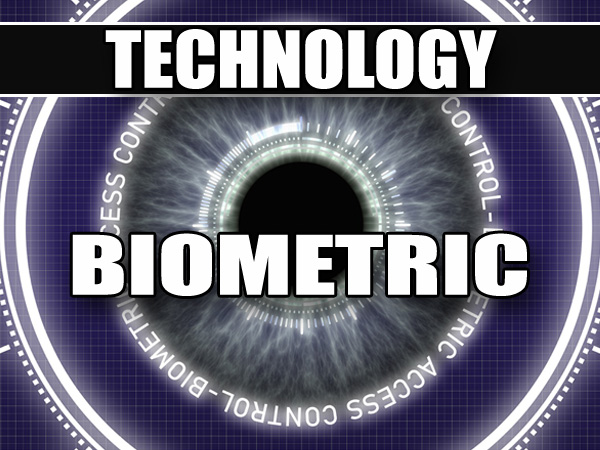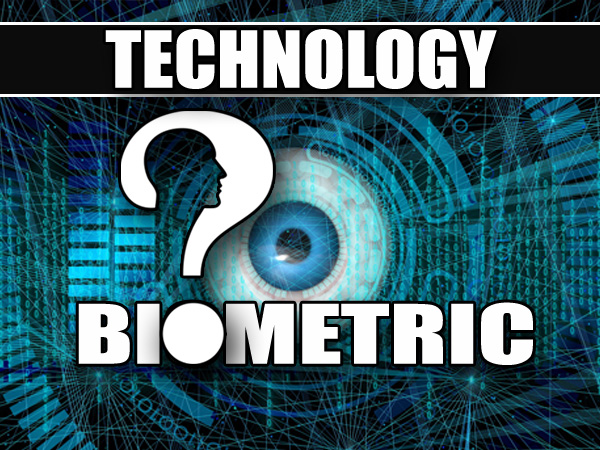Biometric Revolution: Transforming Security and Identity Verification
Introduction:
Welcome to the exciting world of science and technology, where amazing things are happening every day! We want to introduce you to something really special called biometric security. It’s a super smart technology that keeps our personal information safe and makes sure only the right people can access it. How does it work? Well, it uses things like fingerprints, eye patterns, and even your face to make sure it’s really you. This means your private information stays protected and your privacy is respected. Let’s explore this incredible technology and discover all the amazing things it can do! Get ready for an exciting journey into the future of security!
Biometric authentication has emerged as a groundbreaking technology that revolutionizes the way we authenticate and verify individual identities. With its ability to uniquely identify individuals based on their physiological or behavioral characteristics, biometric technology offers enhanced security and convenience in various applications. In this comprehensive blog, we will delve into the world of biometric technology, its definition, applications, potential security concerns, and notable use cases.

What is Biometric Authentication?
Biometric authentication refers to the process of verifying an individual’s identity using unique biological or behavioral traits. These traits can include fingerprints, iris patterns, facial features, voice recognition, or even behavioral characteristics such as typing patterns or gait. By comparing these traits with stored templates, biometric authentication systems ensure secure and accurate identification.
Understanding Biometric Technology:
Biometric technology encompasses the hardware and software systems used to capture, process, and analyze biometric data. Biometric devices, such as fingerprint scanners, iris scanners, or facial recognition cameras, capture the biometric data, which is then processed and matched against the stored templates in a database. Advanced algorithms and machine learning techniques are employed to ensure accurate identification and authentication.
Addressing Security Concerns:
While biometric technology offers enhanced security, it is essential to address potential concerns regarding privacy and data protection. Biometric data, being unique and personal, requires strict safeguards to prevent unauthorized access. Encryption, secure storage, and robust authentication protocols are employed to mitigate security risks and protect sensitive biometric information.
Typical Use Cases for Biometric Technology:
Biometric technology finds applications in various industries and sectors. Some typical use cases include:
- Access Control: Biometric authentication is widely used to control access to secure premises, such as offices, data centers, or high-security areas.
- Mobile Device Security: Many smartphones now feature fingerprint or facial recognition as a secure method for unlocking devices and authorizing transactions.
- Financial Services: Biometric technology enables secure authentication for banking transactions, ATM access, and digital payment systems.
- Healthcare: Biometric authentication helps protect patient data and ensure the accurate identification of individuals in healthcare settings.
- Border Control: Biometric passports and facial recognition systems are used to enhance border security and facilitate efficient immigration processes.
Biometric Technology Companies Leading the Way:
Biometric Technology Companies Leading the Way:
Several prominent companies are at the forefront of developing and advancing biometric technology. These include industry leaders such as:
- NEC Corporation
- Idemia
- Suprema Inc.
- Fingerprint Cards AB
- Aware, Inc.
Exploring Biometric Technology Articles:
Numerous articles and publications provide valuable insights into the world of biometric technology. These articles cover topics such as advancements, case studies, regulations, and future trends. They offer a wealth of knowledge for individuals seeking a deeper understanding of the subject.
Defining Biometric Data:
Biometric data refers to the specific physiological or behavioral characteristics used in biometric authentication. Examples include fingerprints, facial patterns, palm prints, voiceprints, and DNA profiles. This data is unique to each individual and serves as the basis for identification and verification processes.
Biometric Security Systems:
Biometric security systems combine various biometric technologies to create robust security solutions. These systems employ multiple biometric
technologies, such as fingerprint recognition, iris scanning, and voice recognition, to provide multi-factor authentication and enhance security. Biometric security systems are designed to prevent unauthorized access, protect sensitive information, and ensure the integrity of security protocols.
Metric Recognition Technology: A Key Component:
Metric recognition technology is a fundamental component of biometric systems. It involves the measurement and analysis of specific physical or behavioral characteristics to identify individuals accurately. This technology utilizes algorithms and machine learning techniques to extract and compare metrics from biometric data, enabling reliable identification and authentication.
Examples of Biometric Technology in Action:
Biometric technology is already transforming various industries and sectors. Some noteworthy examples include:
- Airport Security: Biometric systems are being implemented at airports to enhance security and streamline passenger verification processes. Facial recognition and fingerprint scanning enable fast and accurate identification of individuals.
- Employee Time and Attendance: Biometric systems are widely used to track employee attendance, eliminating the need for traditional time cards or badges. Fingerprint or facial recognition systems ensure accurate and efficient attendance management.
- Healthcare Records: Biometric authentication ensures secure access to electronic health records, safeguarding sensitive patient information and preventing unauthorized access.
- Mobile Banking: Many banking applications now utilize biometric authentication methods, such as fingerprint or facial recognition, to provide secure access to financial accounts and authorize transactions.
Course of Biometric Technology: Learning Opportunities:
For individuals interested in gaining in-depth knowledge and expertise in biometric technology, various courses and educational programs are available. These courses cover topics such as biometric system design, biometric data analysis, security protocols, and ethical considerations. They provide the necessary skills to develop and implement biometric solutions effectively.
Conclusion:
Biometric technology has emerged as a powerful tool for secure identification and authentication. By leveraging unique physiological or behavioral traits, biometric systems offer enhanced security and convenience in a wide range of applications. While addressing potential security concerns, biometric technology continues to evolve and revolutionize industries such as access control, mobile devices, finance, healthcare, and border control. With the advancement of biometric technology companies and the availability of educational resources, individuals can explore and contribute to the ever-growing field of biometric technology.
As we move forward, biometric technology will undoubtedly play a pivotal role in shaping a more secure and efficient future, where individuals can confidently and conveniently verify their identities using their own unique characteristics.
FAQs
1. What is biometric technology?
Ans. Biometric technology refers to the use of unique physical or behavioral characteristics, such as fingerprints, facial features, iris patterns, or voice patterns, to identify and authenticate individuals. It offers a more secure and convenient method of verifying identities compared to traditional password-based systems.
2. How does biometric authentication work?
Ans. Biometric authentication involves capturing and analyzing biometric data from an individual and comparing it to previously stored templates. The biometric system uses algorithms and pattern recognition techniques to determine if there is a match, thereby granting access or authentication.
3. Are biometrics a security problem?
Ans. Biometrics themselves are not a security problem. However, like any other technology, their implementation and management can pose security challenges. It is crucial to ensure the secure storage and transmission of biometric data, use robust encryption protocols, and have stringent access control measures in place to address any potential security concerns.
4. What are some typical use cases for biometric technology?
Ans. Biometric technology finds application in various domains. Some common use cases include access control systems for physical premises, authentication in mobile devices and banking applications, border control and immigration, time and attendance management in organizations, and secure healthcare record access.
5. What are the main benefits of biometric technology?
Ans. Biometric technology offers several benefits, such as enhanced security through unique individual characteristics, increased convenience by eliminating the need to remember passwords or carry access cards, reduced risk of identity theft, improved accuracy in authentication processes, and scalability for large-scale deployments.
6. What are some examples of biometric technologies?
Ans. There are several biometric technologies available, including fingerprint recognition, facial recognition, iris scanning, voice recognition, palm print recognition, and behavioral biometrics (such as keystroke dynamics or gait analysis). Each technology has its strengths and suitability for different use cases.
7. What is the role of biometric technology companies in the industry?
Ans. Biometric technology companies play a crucial role in developing, manufacturing, and implementing biometric solutions. These companies focus on research and development, algorithm design, hardware manufacturing, system integration, and providing consultation services to organizations that aim to leverage biometric technology for enhanced security and authentication.
8. Are there any ethical considerations regarding biometric technology?
Ans. Yes, there are ethical considerations associated with the use of biometric technology. Privacy concerns, data protection, and consent for collecting and storing biometric data are important factors to consider. Biometric systems should adhere to legal and ethical guidelines to ensure transparency, user consent, and the responsible use of biometric information.
9. How accurate are biometric systems?
Ans. Biometric systems have proven to be highly accurate, with error rates typically lower than traditional identification methods. However, the accuracy can vary depending on factors such as the quality of the biometric data captured, the algorithms used for comparison, and the specific biometric modality being employed.
10. Can biometric data be stolen or replicated?
Ans. While biometric data is unique to individuals and difficult to replicate, there is still a possibility of theft or misuse. Biometric systems employ strong encryption and security measures to protect the stored data. However, as with any sensitive information, it is crucial to implement robust security protocols to mitigate the risk of unauthorized access or data breaches.
Please note that these FAQs provide general information about biometric technology and should not be considered as professional advice. For specific guidance or implementation considerations, it is recommended to consult with experts in the field.
Sources:
Related Searches
